Comments / Questions (36)
![]() Iris wrote:
Iris wrote:
Komme mit der Maschenangabe bei den Armabnahmen nicht klar. Z.B. Rückenteil Gr. XL Start bei 96 M. Beidseitig je 1 M abnehmen (2 M), dann 10x Abnahme in jeder 2. Reihe (20 M) und noch 2x Abnahme in jeder 4. Reihe (4 M). Das sind 26 M Abnahme insgesamt. 96 M - 26 M = 70 M. Lt. Anleitung habe ich aber noch 72 M sein? Das ist eine Differenz von 2 Maschen.
07.12.2025 - 19:49DROPS Design answered:
Liebe Iris, es wird 10 x in jeder 2. Reihe und 2 Mail in jeder 4. Reihe beidseitig abgenommen, so 10+2= 12x 2 Seiten = 24 Maschen werden insgesamt abgenommen, so hat man 96-24=72 Maschen übrig. Viel Spaß beim Stricken!
08.12.2025 - 09:57
![]() Segnon wrote:
Segnon wrote:
Ich verstehe die Anleitung für die Schultern nicht. Was passiert mit den stillgelegten Maschen? Und wieso müssen auf der einen Seite 2x5 Maschen(grösse S) und auf der anderen Seite 7 Maschen stillgelegt werden. Zudem verstehen ich auch die Anleitung für das Stricken mit der Aufnahme aus dem Querfaden leider nicht.
18.11.2025 - 14:00DROPS Design answered:
Liebe Frau Segnon, es soll die gleiche Maschenanzahl an beide Schulter sein, damit sie schräg sind, dh ab Armausschnitt: 2 x 5 und 1 x 7. Dieses Video (für ein anderes Modell) kann Ihnen damit sicher helfen - dann mit dem Querfaden bei der letzten Reihe kann Ihnen dieses Video helfen. Viel Spaß beim Stricken!
18.11.2025 - 17:13
![]() Anne wrote:
Anne wrote:
Je ne comprends pas le patron à partir de quand l’ouvrage mesure 59cm en M. Laisser 2x6m pour les épaules et après les 6 dernières m. Je ne vois pas comment faire. Auriez-vous une vidéo disponible ? Merci d’avance pour vos éclaircissements!
12.11.2025 - 15:46DROPS Design answered:
Bonjour Anne, vous allez tricoter puis mettre en attente 2 fois 6 mailles en début de rang à partir de l'emmanchure puis, dans cette taille, encore 1 fois les 6 dernières mailles; pour mettre ces mailles en attente procédez ainsi: en début de rang à partir de l'emmanchure, tricotez ces 6 mailles et mettez-les en attente, continuez le rang, tournez, si votre rang suivant commence par l'emmanchure de l'autre côté, procédez de la même façon, sinon (après l'encolure), tricotez le rang suivant (à partir de l'encolure), puis répétez ces 2 rangs. Retrouvez cette technique en vidéo. Bon tricot!
12.11.2025 - 16:55
![]() Heidi wrote:
Heidi wrote:
Hvor mange nøster trengs til XL Vestfjord vest. Fargealternativer?
07.11.2025 - 10:45
![]() Jonna wrote:
Jonna wrote:
Hvor meget positive ease er der indregnet i denne opskrift? Min model måler 98 cm brystmål. Er 20 cm for meget i positive ease? Vh Jonna
11.10.2025 - 19:22DROPS Design answered:
Hei Jonna. Måleskitsen indeholder målene på de størrelser vi præsenterer i opskriften. Hvis du følger opskriften og overholder strikke-/hæklefastheden får dit tøj samme mål som i skitsen. Hvis du har svært ved at bestemme dig for hvilken størrelse du skal strikke, så kan det være en god ide at måle en trøje din model synes godt om. Vælg da den størrelse i måleskitsen som modsvarer de mål. Mvh DROPS Design
14.10.2025 - 15:19
![]() Nanette wrote:
Nanette wrote:
Thank you for your response, but I am still confused. How do you go from 18 sts on each side to 20 sts on each side? And how do you decrease 1 st on the neck if you have already cast off the middle 28 sts?
29.09.2025 - 14:33
![]() Nanette wrote:
Nanette wrote:
I am working on the Vestfjord Vest in size large? Is there an error in the stitch count in the section titled Diagonal Shoulders and Neckline? I am coming out with 18 stitches on each shoulder and 32 stitches in the middle. The pattern says I would have 20 stitches on each shoulder and 28 in the middle.
28.09.2025 - 22:50DROPS Design answered:
Hi Nanette, BACK: 68 sts in size L. DIAGONAL SHOULDERS and NECKLINE: you have to place 18 stitches on the threads on each side (according to the pattern). When all the stitches are on the threads, place them back on circular needle size 5 mm. When the piece measures 62 cm cast off the middle 28 sts for the neck. You have 20 sts for each shoulder. On the next row decrease 1 stitch from the neck. Now you end with 19 sts for each shoulder. Happy knitting!
29.09.2025 - 07:53
![]() Donna wrote:
Donna wrote:
I am trying to knit this vest for my husband. I do not understand what I am supposed to do where it talks about the shoulders. It says to put 6 stitches on thread then it talks about binding off and then it says you. Should have 20 sts for shoulders. Can you explain those two parts better for me?
10.09.2025 - 02:08DROPS Design answered:
Hi Donna, The stitches which you place on a stitch holder/thread are for the diagonal shoulders (work these stitches first so you don't need to cut the working strand each time. Begin the first row by working the first 6 stitches, then placing them on a stitch holder, work to end of row, turn, work and place the first 6 stitches on a separate holder. Turn and repeat. 3 x 6 stitches each side (18 stitches on each holder). At the same time, when the piece is the correct length, you cast off the middle stitches for the neckline and you finish each shoulder separately (the stitches are still being placed on the holders when you do this. Hope this helps. Regards, Drops Team.
10.09.2025 - 06:48
![]() Dianne wrote:
Dianne wrote:
I used Drops Air and used the detail from Autumn Leaves to match a woman’s vest (his & her vests). After I finished I discovered there is a line of demarcation where a new ball was added on the front despite being the same dyelot. I am very distressed.
26.08.2025 - 22:54
![]() Hana wrote:
Hana wrote:
Beginner knitter here. After finishing the back and before working the diagonal shoulders and neckline simultaneously, do I continue knitting rows until the piece measures 57 cm or should the piece already measured at 57 cm.
10.08.2025 - 02:29DROPS Design answered:
Dear Hana, once you have the necessary number of stitches you may or may not have reached the necessary length for the diagonal shoulders. If you haven't reached it (which may depend on the size worked or your knitting gauge) continue back and forth without decreases until your piece measures 57cm. Happy knitting!
10.08.2025 - 17:02
Vestfjord Vest#vestfjordvest |
|
 |
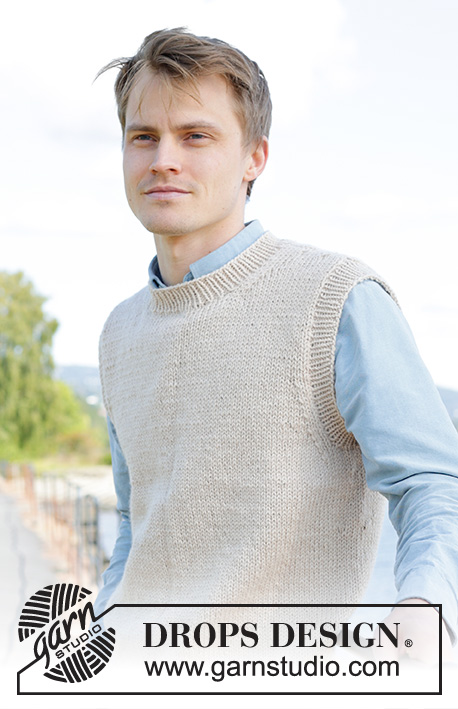 |
Knitted vest for men in DROPS Nepal. The piece is worked bottom up in stocking stitch. Sizes S - XXXL.
DROPS 246-13 |
|
|
------------------------------------------------------- EXPLANATIONS FOR THE PATTERN: ------------------------------------------------------- INCREASE TIP (for sides of body): Work until there are 2 stitches left before the marker thread, 1 yarn over, knit 4 (marker thread sits between these 4 stitches), 1 yarn over. On the next round knit the yarn overs twisted to avoid holes. Then work the new stitches in stocking stitch. DECREASE TIP (for armholes and neckline): All decreases are worked from the right side! DECREASE 1 STITCH AT THE BEGINNING OF THE ROW: 1 edge stitch in garter stitch, knit 2, slip 1 stitch knit-wise, knit 1, pass the slipped stitch over the knitted stitch (= 1 stitch decreased). DECREASE 1 STITCH AT THE END OF THE ROW: Work until there are 5 stitches left on the row, knit 2 together (= 1 stitch decreased), knit 2 and 1 edge stitch in garter stitch. ------------------------------------------------------- START THE PIECE HERE: ------------------------------------------------------- VEST – SHORT OVERVIEW OF THE PIECE: The piece is worked in the round with circular needle, bottom up as far as the armholes. The piece is divided for the front and back pieces which are finished separately, back and forth. The neck and sleeve-edges are worked in the round with circular needle to finish. BODY: Cast on 188-196-214-242-268-282 stitches with circular needle size 4 mm and DROPS Nepal. Work rib in the round (knit 1, purl 1) for 6 cm. Knit 1 round and decrease 20-20-22-26-28-30 stitches evenly spaced = 168-176-192-216-240-252 stitches. Insert a marker-thread at the beginning of the round and 1 marker-thread after 84-88-96-108-120-126 stitches. Allow the threads to follow your work onwards – they are used when increasing in the sides. Change to circular needle size 5 mm. Work stocking stitch. REMEMBER THE KNITTING TENSION! When the piece measures 10 cm, increase 2 stitches on each side - read INCREASE TIP. Increase like this every 14-6-6-16-16-17 cm a total of 2-4-4-2-2-2 times = 176-192-208-224-248-260 stitches. Work until the piece measures 32-33-34-35-36-37 cm. On the next round cast off for the armholes as follows: Start 5-6-7-8-9-10 stitches before the first marker-thread, cast off 10-12-14-16-18-20 stitches, work as far as 5-6-7-8-9-10 stitches before the second marker-thread, cast off 10-12-14-16-18-20 stitches. Finish the front and back pieces separately. Place the first 78-84-90-96-106-110 stitches on a thread for the front piece. BACK PIECE: = 78-84-90-96-106-110 stitches. On the next row from the right side decrease 1 stitch on each side for the armholes - read DECREASE TIP. Continue with stocking stitch back and forth (with 1 edge stitch in garter stitch on each side) and decrease like this every 2nd row (each row from the right side) a total of 5-7-9-10-15-14 times, then every 4th row (every 2nd row from the right side) 3-3-2-2-1-2 times = 62-64-68-72-74-78 stitches. Work the shoulders and neckline simultaneously as described below. Read the next section before continuing. DIAGONAL SHOULDERS and NECKLINE: When the piece measures 57-59-61-63-65-67 cm, place stitches on a thread on each side for the shoulders (to avoid cutting the strand, work the stitches first): Place stitches on the threads on each side as follows: 5-6-6-7-7-7 stitches 2 times and then the last 7-6-7-7-7-9 stitches. When all the stitches are on the threads, place them back on circular needle size 5 mm. Work 1 row stocking stitch (to avoid holes in the transitions between stitches, pick up the strand between 2 stitches and work it twisted together with the next stitch on the left needle). Cast off on the next row. AT THE SAME TIME when the piece measures 58-60-62-64-66-68 cm, cast off the middle 26-26-28-28-30-30 stitches for the neck (18-19-20-22-22-24 stitches on each shoulder) and finish each shoulder separately. On the next row decrease 1 stitch from the neck. When all the stitches are cast off, the piece measures approx. 60-62-64-66-68-70 cm from the top of the shoulder. Repeat on the other shoulder. FRONT PIECE: = 78-84-90-96-106-110 stitches. On the next row from the right side, decrease 1 stitch on each side for the armholes - remember DECREASE TIP. Continue with stocking stitch back and forth (with 1 edge stitch in garter stitch on each side) and decrease like this every 2nd row (each row from the right side) a total of 5-7-9-10-15-14 times, then every 4th row (every 2nd row from the right side) 3-3-2-2-1-2 times = 62-64-68-72-74-78 stitches. When the piece measures 52-54-55-57-58-60 cm, place the middle 18-18-18-18-20-20 stitches on a thread for the neckline (22-23-25-27-27-29 shoulder stitches left) and finish each shoulder separately. Continue working and decreasing 1 stitch for the neck every 2nd row (each row from the right side) a total of 5-5-6-6-6-6 times – remember DECREASE TIP = 17-18-19-21-21-23 shoulder stitches. Now work the diagonal shoulders as described below. DIAGONAL SHOULDERS: When the piece measures 57-59-61-63-65-67 cm, place stitches on a thread on each side for the shoulders in the same way as on the back piece, i.e., 5-6-6-7-7-7 stitches 2 times and then the last 7-6-7-7-7-9 stitches. When all the stitches are on the threads, place them back on circular needle size 5 mm. Work 1 row stocking stitch in the same way as on the back piece. Cast off on the next row. The piece measures approx. 60-62-64-66-68-70 cm from the top of the shoulder. Repeat on the other shoulder. ASSEMBLY: Sew the shoulder seams. NECK: Start from the right side on one shoulder, with short circular needle size 4 mm, and knit up 76 to 92 stitches around the neck (including the stitches from the thread) inside the 1 edge stitch (stitch count must be divisible by 2). Work rib in the round (knit 1, purl 1) for 3 cm. Cast off with knit over knit and purl over purl. SLEEVE-EDGES: Start from the right side at the bottom of the armhole, with short circular needle size 4 mm, and knit up 96-98-102-106-110-114 stitches around the armhole, inside the 1 edge stitch (stitch count must be divisible by 2). Work rib in the round (knit 1, purl 1) for 3 cm. Cast off with knit over knit and purl over purl. Work the other sleeve-edge in the same way. |
|
 |
|
Have you finished this pattern?Tag your pictures with #dropspattern #vestfjordvest or submit them to the #dropsfan gallery. Do you need help with this pattern?You'll find 29 tutorial videos, a Comments/Questions area and more by visiting the pattern on garnstudio.com. © 1982-2025 DROPS Design A/S. We reserve all rights. This document, including all its sub-sections, has copyrights. Read more about what you can do with our patterns at the bottom of each pattern on our site. |
|







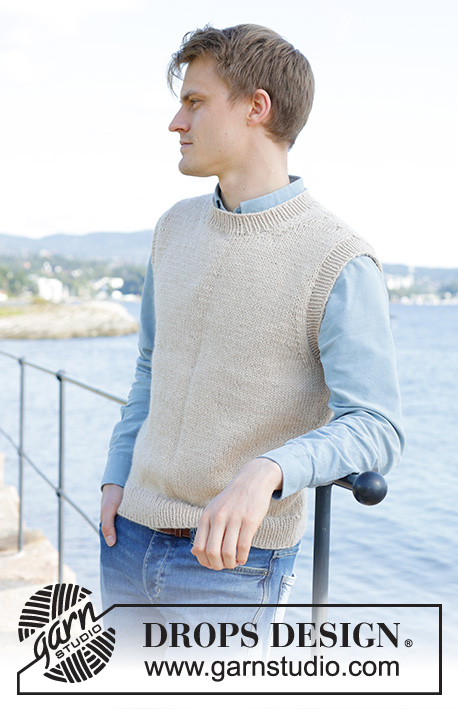
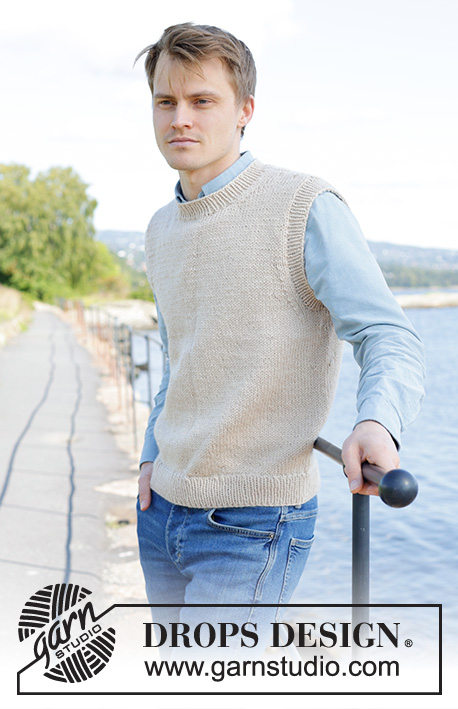

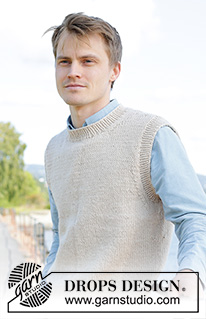
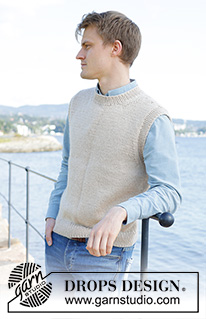
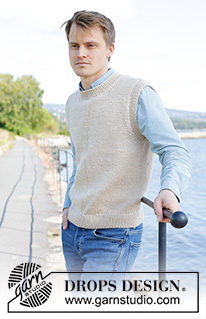
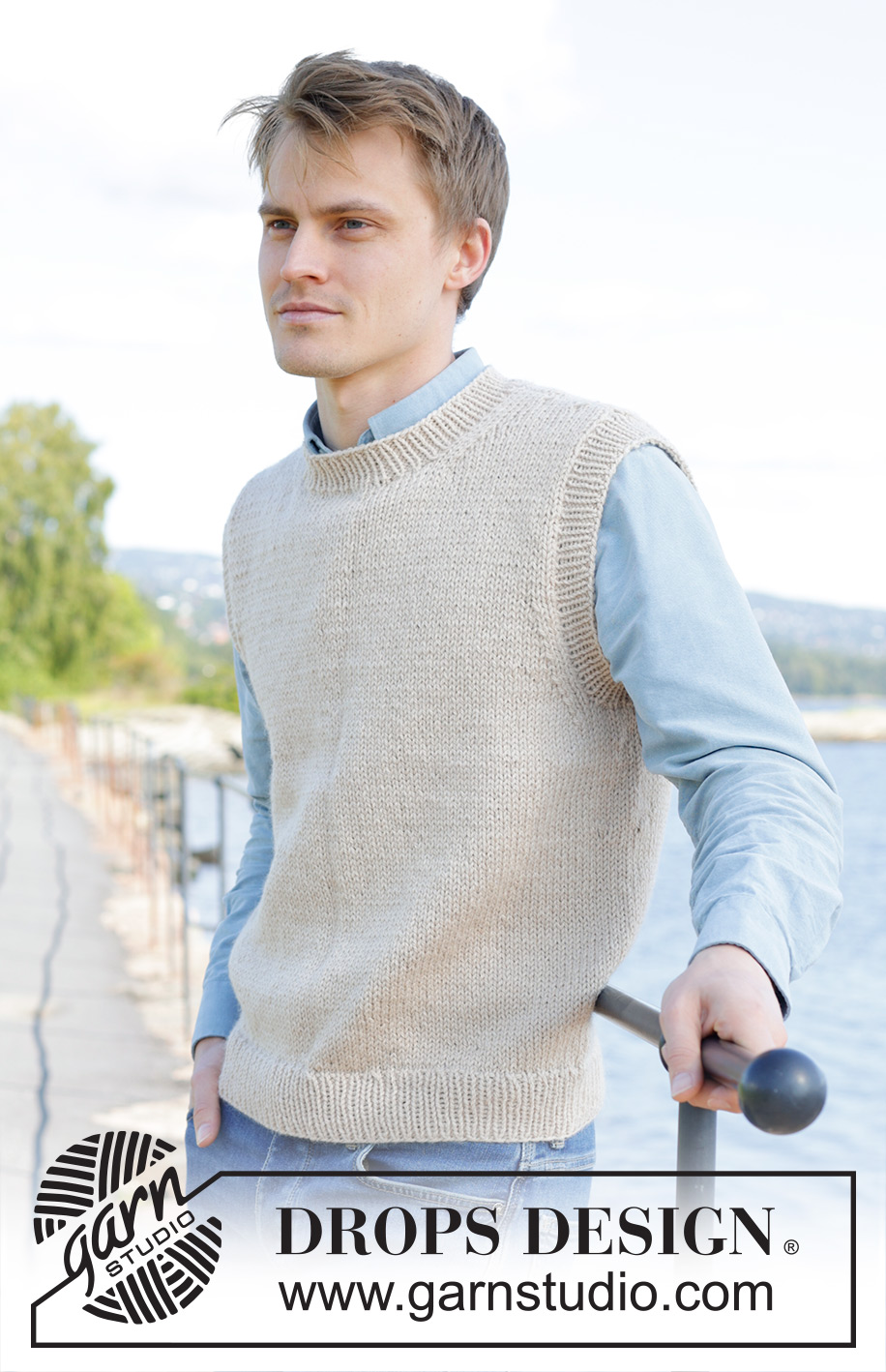
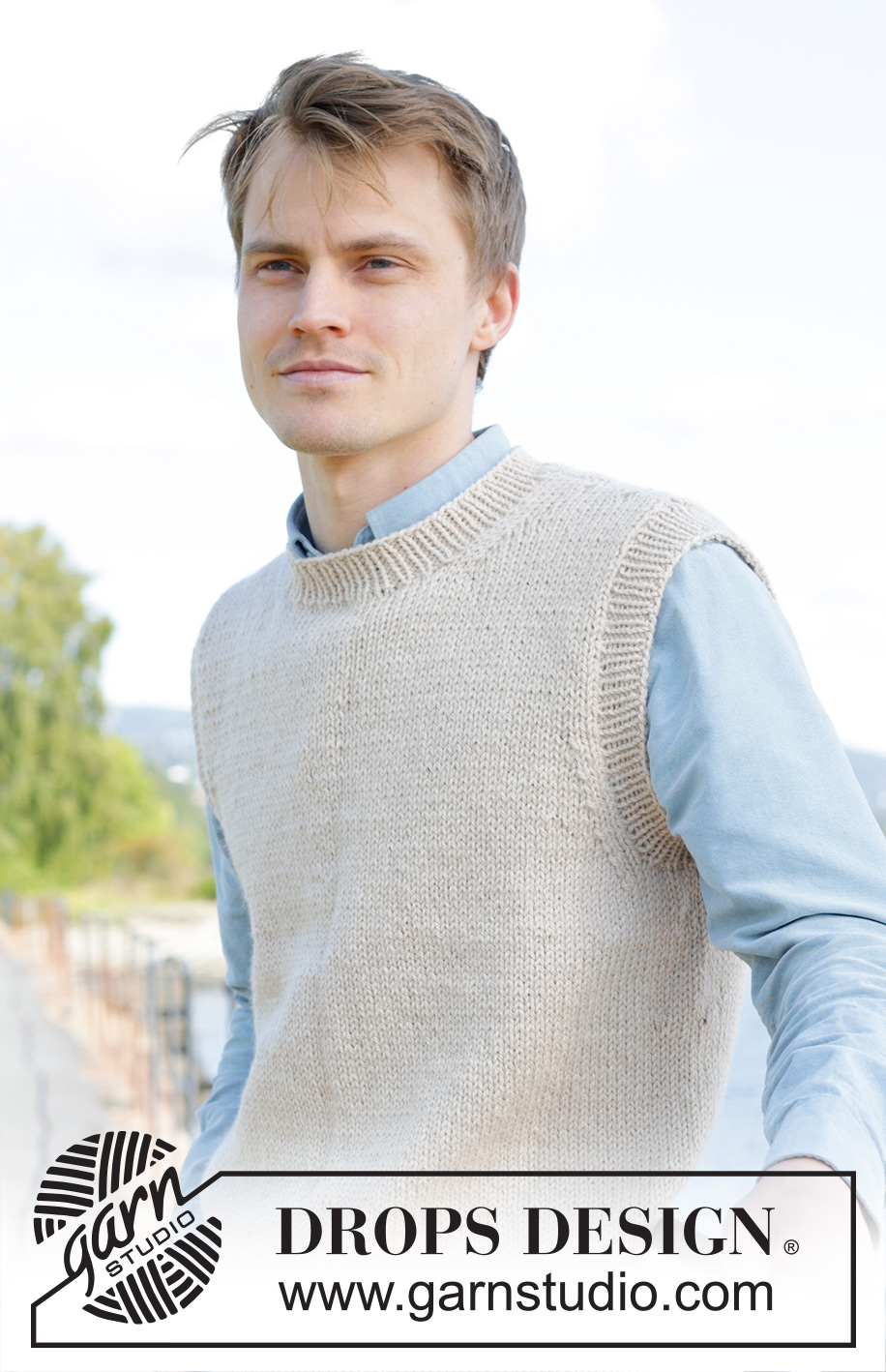
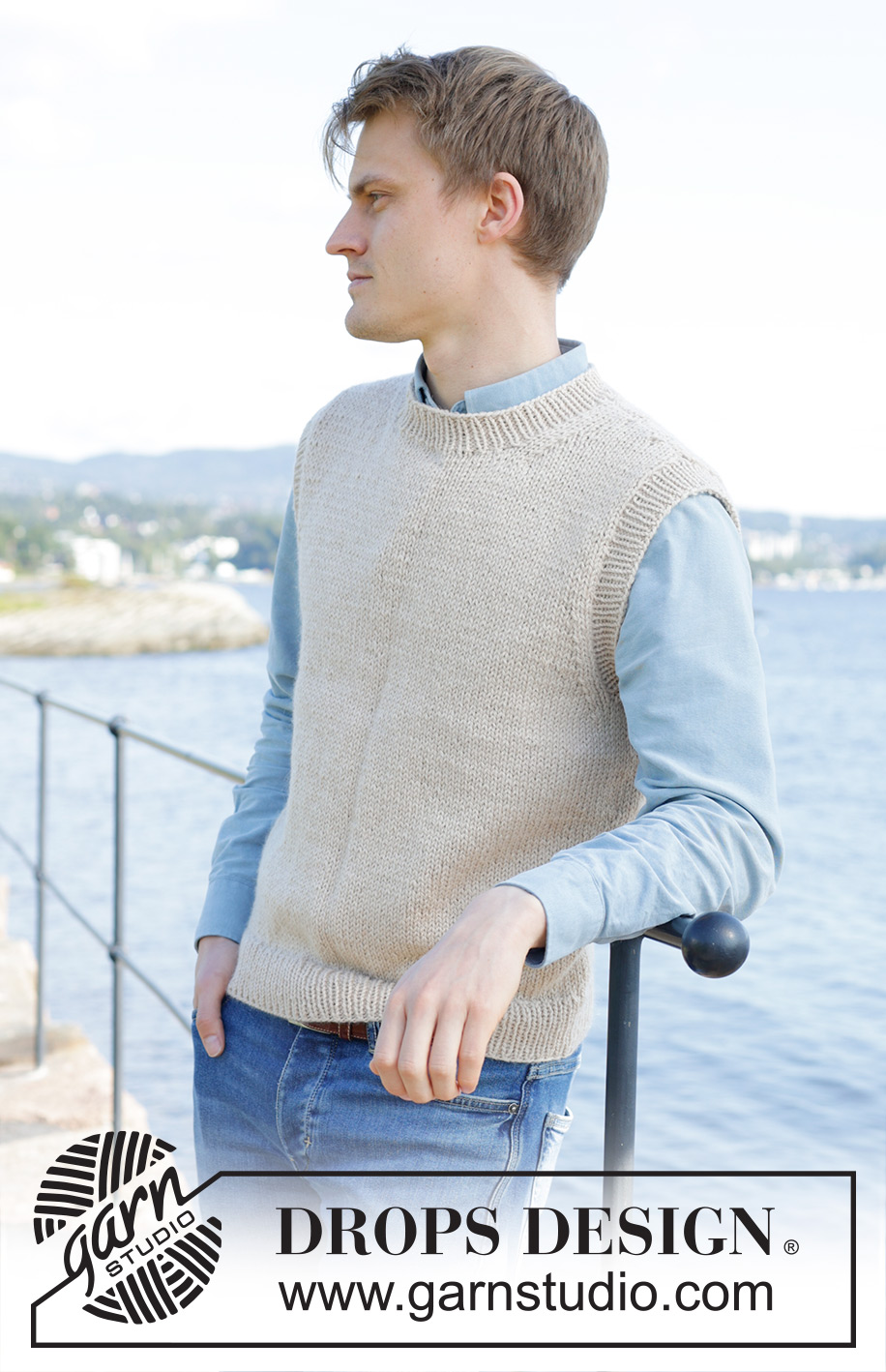
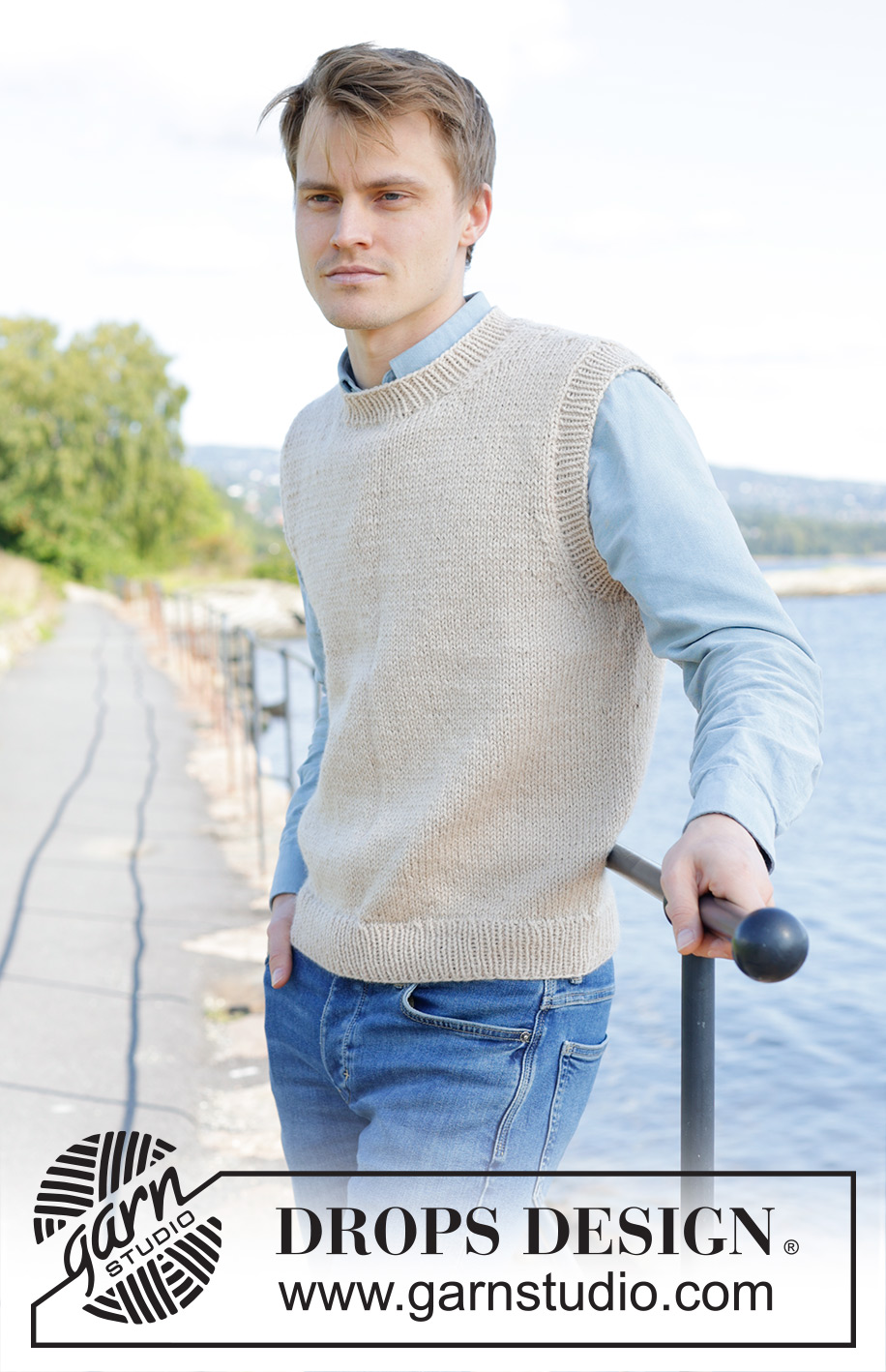

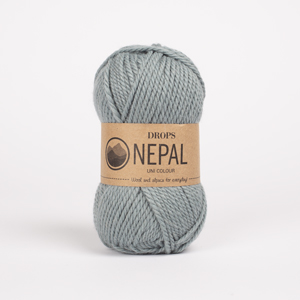
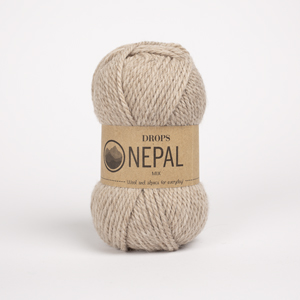

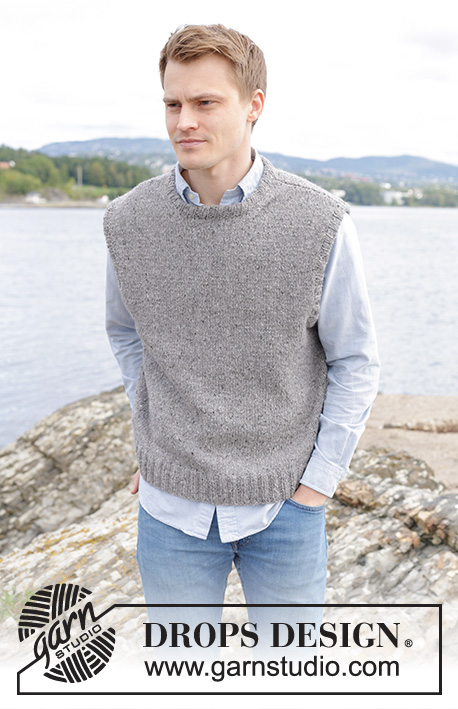














































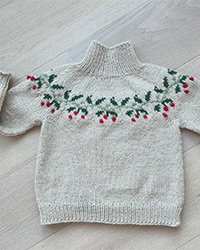
Post a comment to pattern DROPS 246-13
We would love to hear what you have to say about this pattern!
If you want to leave a question, please make sure you select the correct category in the form below, to speed up the answering process. Required fields are marked *.